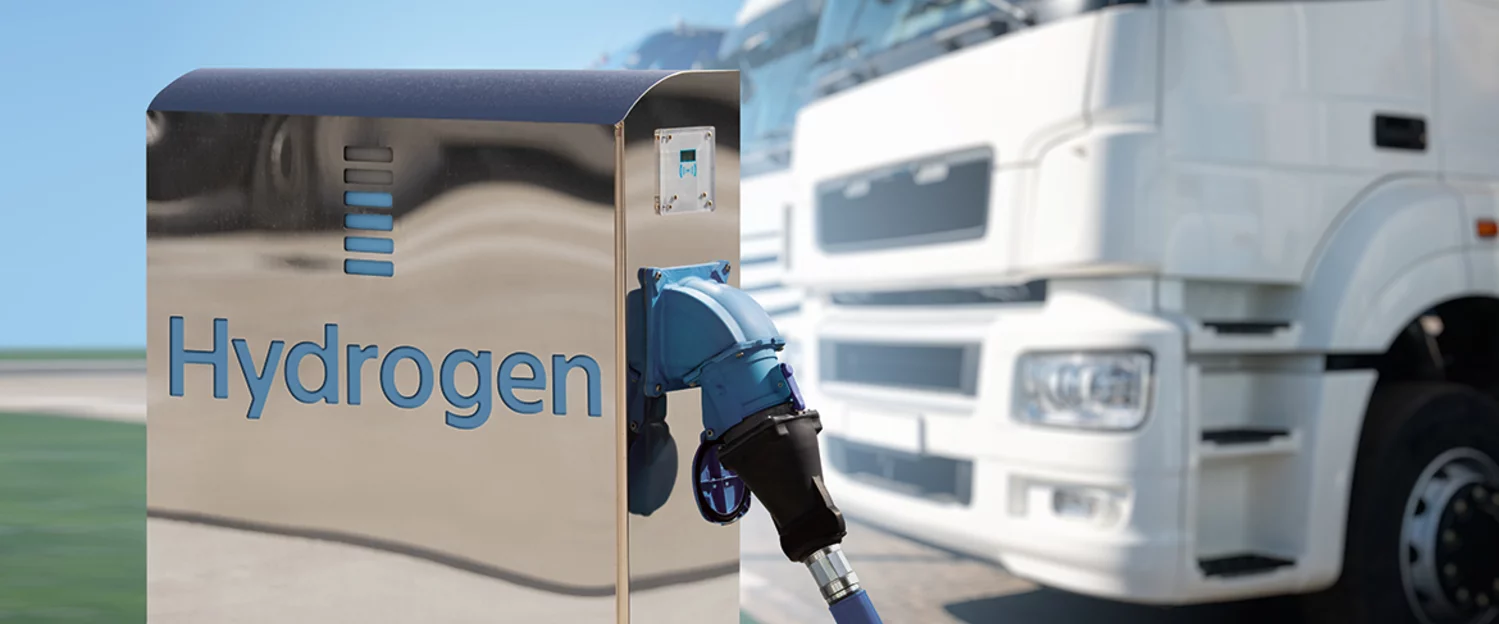Hydrogen is once again on the agenda for the automotive industry, particularly when it comes to commercial vehicles. But the very thing that makes this substance a source of power is also what makes it so sensitive. Keyword: safety. In the interview, Jörg Ruppert, engineer at Weiss Technik, explains what tests have to be done in order for this explosive element to be used.
Some automotive manufacturers report that they are working on drives with hydrogen technology as an alternative to batteries. What are your views about hydrogen applications in the field of mobility?
Due to the move away from fossil fuels and the funding for hydrogen applications by the federal government and the states, there are research and development projects that we will later see on the roads. Hydrogen-powered vehicles and their components must pass the same environmental simulation tests as conventional vehicles with combustion or electric motors. Corresponding testing systems are needed for this.
Are there already any signs of an increase in demand?
Definitely. Many automotive manufacturers are looking into hydrogen, as are the associated suppliers, i.e. companies that build components such as duct systems, valves, tanks or safety equipment. We are also seeing a strong increase in requests to retrofit existing testing systems for hydrogen applications.
What sort of environmental influences have to be taken into account in the operation of hydrogen vehicles?
The classic parameters are tested in environmental simulations: high and low temperatures, for example, and fast fluctuations, as well as humidity and corrosion, which can build up as a result of salt mist in offshore applications, for instance. Various weather conditions, radiant exposure to IR and UV light (heat build-up and ageing) are also tested. All within just a few days – in fast motion, you could say.
What else is tested in addition to the environmental influences?
It’s important to examine the impact of vibrations, as they can cause leakage. We also test the effects of under- and overpressure, which is particularly relevant in mobility at high altitudes or in aircraft.
Let’s briefly return to the topic of “retrofitting”. Can a simulation system that has so far been used to test combustion or electric motors be easily retrofitted to test hydrogen vehicles?
Yes, it’s possible. At the start of a conversion, a comprehensive risk analysis is carried out. It is necessary to accurately assess what hazards arise from the use of hydrogen, how incidents can be prevented and what countermeasures have to be implemented in critical situations. In other words: a thorough on-site examination of the system with inspection, consultancy and individual concept development.
Hydrogen is really quite aggressive. What does this mean for vehicle technology? And for the testing?
That’s right. Hydrogen reacts easily with oxygen and is therefore flammable and highly explosive. These are qualities that you have to take into account. It is important not to have any leaky areas, i.e. preventing the hydrogen from leaking. For example with small components. Or double-strength pipes – a pipe within a pipe – with additional coating to rule out corrosion. These are the sort of supply lines used in systems in which fuel cells are tested, for example. They also have rapid-closing valves that immediately seal off when hydrogen is released.
If hydrogen leaks out in spite of all the safety measures, what do you need to consider?
If that happens, we must prevent an explosive mixture from forming. The amount of hydrogen released, in relation to the volume of the room and the duration of the leak, determines the risk. As a rule of thumb, if the amount is minimal and the time unit long, it’s controllable. If the amount released is large and the time unit short, it becomes dangerous.
What measures are necessary in a critical situation?
The hazard must be detected and signalled quickly. Another emergency measure is diluting the hydrogen by rinsing. Here too it is important where the leak happened – for example, the size of the room will determine the extent to which the hydrogen needs to be diluted. When there is a concrete risk of explosion, switching off the system is the only option.
What does that mean for manufacturing in terms of processing and cleanliness?
Hydrogen ducts and tank systems are naturally a thorny issue. Impurities are caused primarily by the operating conditions, such as extreme temperatures or high pressure. The hydrogen also needs the appropriate level of purity, otherwise corrosion can quickly set in. Meticulousness is obligatory, both in the implementation in the system and in the processing in order to avoid leakages and damage to the surfaces.
When dealing with hydrogen, the most important thing is safety, in other words the quality of all the components. What else is subject to testing?
Performance is one part of the quality assurance. The performance of the components is just as much a focus for the testing as is safety. Users want to know how their components perform under which conditions. When does performance drop off, when does it increase?
From which industries could automotive manufacturers pick up successful approaches for handling hydrogen technology?
The chemicals and energy industries. And also the marine, aeronautic and aerospace sectors, with all the system and component suppliers. Maybe we’ll soon see small aircraft flying on hydrogen. There have been hydrogen aircraft already, or hydrogen combustion engines. Hydrogen is already being used in the commercial vehicle industry.
Since the development and testing of hydrogen technology requires a large outlay on safety, the question is: would it not be possible to work with substitutes that are less dangerous?
The specific qualities of hydrogen, and thus also its risks, cannot be replaced by other elements in the test. This is why a targeted risk assessment and hazard analysis with the corresponding safety measures is essential. Moreover, a substitute material would make little sense, since the products that are later to be powered by hydrogen require the corresponding approvals for this.
Finally, let’s stay with the possible alternative materials in the area of mobility. Synthetic fuels, known as e-fuels, could be an alternative to hydrogen. Do you take this into account in the development of your simulation systems?
We plan our testing facilities in close consultation with the customers. In the process, we take account of special requirements, including when it comes to fuels. The basis for this is knowing the characteristics of the materials, aligning the sensors towards these and safeguarding fire prevention. Weiss Technik adapts the systems to the respective risk analysis, and we advise and raise the awareness of our customers accordingly.

